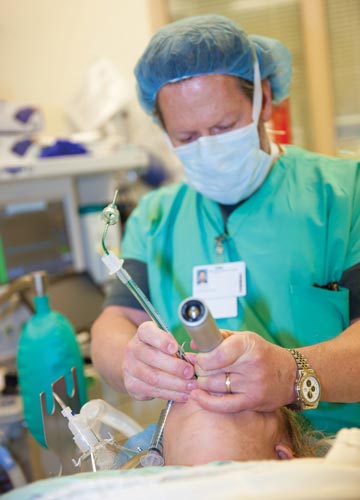From video laryngoscopes to supraglottic airways, advanced airway devices have made intubations and sedations safer than ever — assuming that your anesthesia providers are comfortable using them. You know what they say about assuming.
“We have lots of fancy airway devices and toys that have improved first-pass success and safety of intubation, but staying proficient on all the many different devices can be a challenge when there are 10 different video laryngoscopes,” says University of Florida College of Medicine professor of anesthesiology Lauren Berkow, MD, FASA, who’s also president of the Society for Airway Management.
Calling video laryngoscopes “the biggest innovation in routine airway management in the last 20 years,” Richard P. Dutton, MD, MBA, chief quality officer at U.S. Anesthesia Partners in Dallas, Texas, notes a gradual shift toward intubation via video laryngoscope as the standard of care.
“We still teach direct laryngoscopy, but more and more, the routine practice is turning to video laryngoscopy because it’s a little bit easier and more reliable,” says Dr. Dutton.
Over the years, the screens, optics, size, shape and form on video laryngoscopes have improved so much that, “with a little bit of training, you can turn everybody into someone who can successfully intubate 90% of the American public,” says Tom Losasso, MD, staff anesthesiologist with Summit Anesthesia/Orthopedics in Eagan, Minn. “Every [outpatient facility] should have a video laryngoscope because it makes everybody more effective.”
Emerging disposable video laryngoscopes could make economic sense for smaller facilities as opposed to buying a single reusable scope that costs thousands of dollars and requires maintenance and cleaning, says Dr. Berkow, while larger facilities with dozens of ORs may be better served buying multiple $15,000 reusable scopes rather than hundreds of disposable ones.
.svg?sfvrsn=be606e78_3)

.svg?sfvrsn=56b2f850_5)